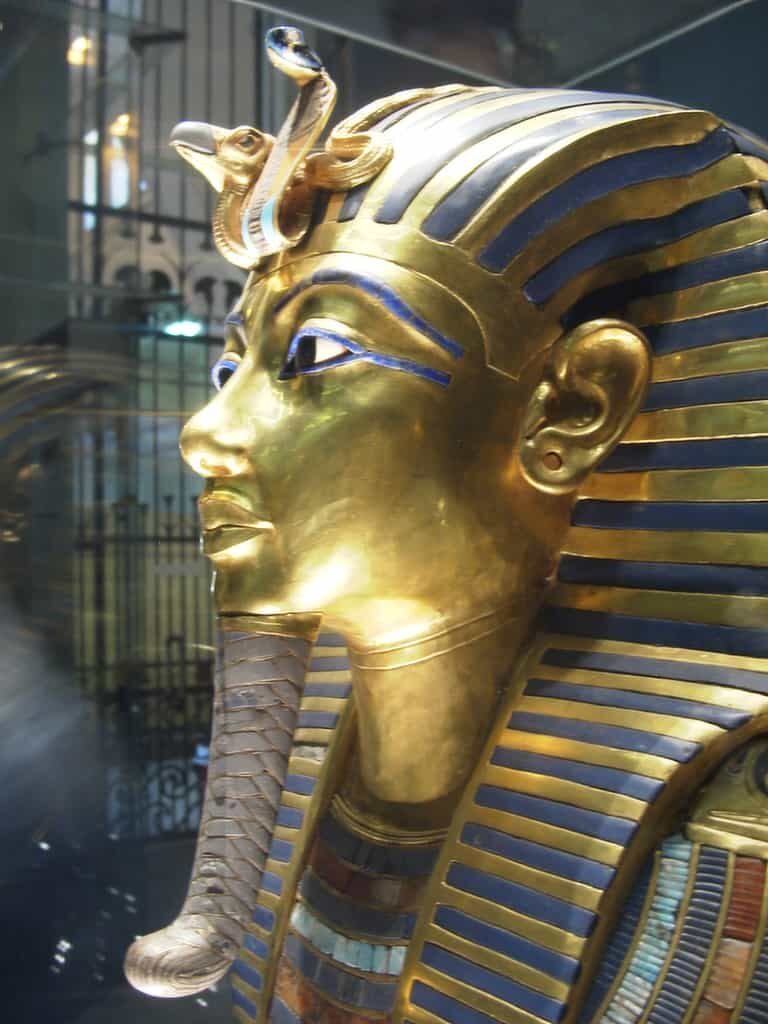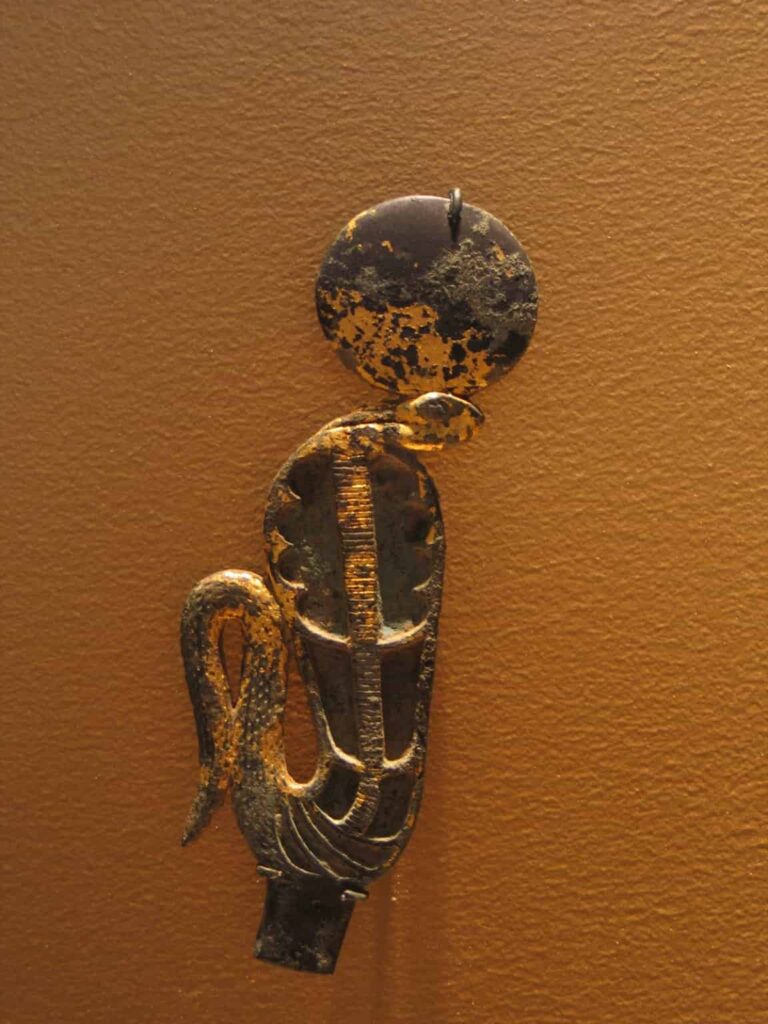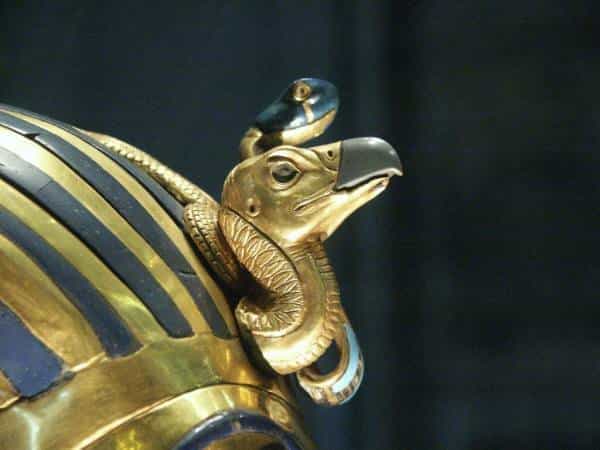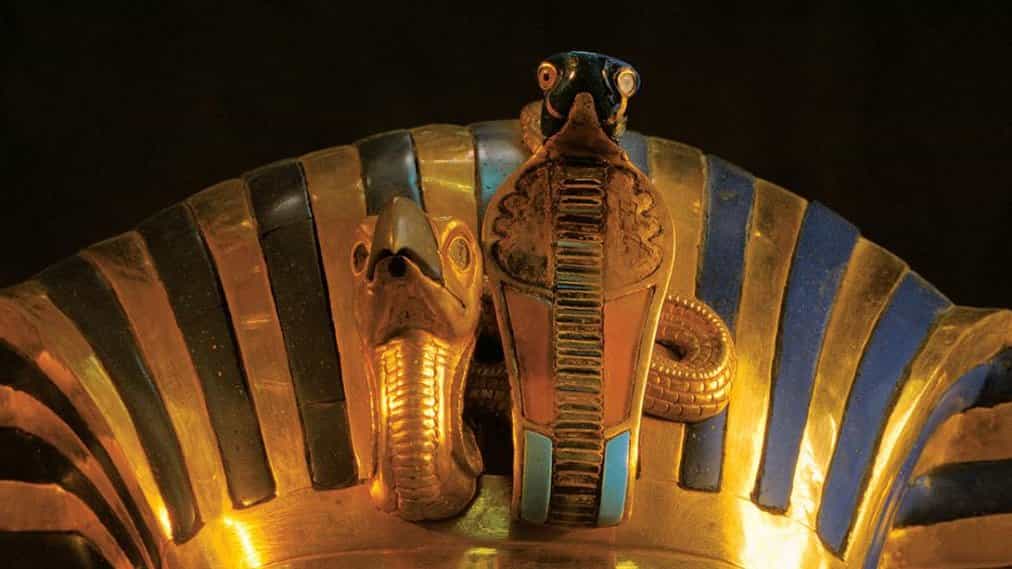The Uraeus is a representation of the goddess Wadjet in the form of an upright cobra. The Uraeus symbol was the favored protective emblem of many pharaohs of Ancient Egypt, who were the only ones permitted to carry it as a distinct symbol of royalty.
Etymology
The term “Uraeus” was utilized by the Upper Egyptian scholar Horapollo at the end of the 5th century AD in his treatise Hieroglyphica, where he provides an ideographic interpretation of hieroglyphic writing.
Iconography
The Uraeus resembled a cobra and occasionally bore the Red crown of Lower Egypt and the White crown of Upper Egypt. The cobra goddess Wadjet often appeared alongside the vulture goddess Nekhbet, symbolizing Lower and Upper Egypt, respectively.
Mythology
Originally hailing from the Nile Delta, Wadjet symbolized Lower Egypt as the protective goddess of the pharaoh. She was depicted as a snake offering protection to gods and pharaohs in the mythology of ancient Egypt, attributed with great power, embodying the solar goddesses.
Nekhbet, portrayed as a vulture, represented Upper Egypt and served as a protective deity for the pharaoh during births, coronations, jubilee festivals, and battles.
The title of one of the pharaohs, Nebty, incorporates the Uraeus. It is also depicted atop numerous temples and formed part of the ancient Egyptian crowns, serving as a diadem holding the Nemes (the pharaohs’ headdress), as well as appearing in jewelry or amulets of pharaohs and ancient gods.
The cobra and snakes were symbols of resurrection and were associated with the solar myths depicting the Sun’s journey through the sky and the underworld, known as the Duat.
They were primarily venerated in Buto, and upon their demise, they were placed in bronze or wooden boxes, engraved with reliefs of snake images, occasionally sporting a human head adorned with the Double crown and the uraeus.









